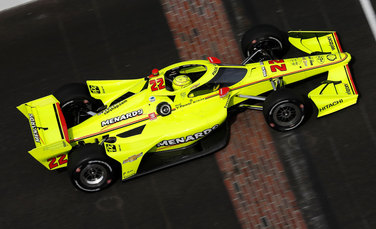Lifecycle of an Indy Car
May 17, 2021
"Penske Material" provides an inside look at some of the personalities, stories and moments that make Team Penske so unique.
As fans eagerly await the 105th running of the Indianapolis 500 later this month, the NTT INDYCAR SERIES continues to be the most competitive racing series in the world. The last several seasons have proven to be some of the most entertaining in the history of open-wheel racing and the 2021 season is shaping up to be one for the ages. At the center of the superb on-track competition is the INDYCAR chassis and engine combinations. More specifically, for Team Penske, the Chevrolet-powered Dallara DW-12.
These are high-performance machines that more closely resemble fighter jets than an automobile. The parts, pieces and components that make up each of these world-class race cars are highly engineered and proprietary to the team or manufacturer. They are constantly being evaluated for performance and wear and tear.
So, what is the shelf life for an Indy car? With so many different parts and conditions factored into these speed-searching works of art, it is not an easy question to answer.
 “To start the season, Scott McLaughlin has been running one of the initial chassis from 2012, so you can go a long time with one chassis,” said Team Penske team manager Kyle Moyer. “At Team Penske, there are three ways to absolutely retire a chassis – damage it in a wreck, win the INDYCAR SERIES championship or win the Indianapolis 500.”
“To start the season, Scott McLaughlin has been running one of the initial chassis from 2012, so you can go a long time with one chassis,” said Team Penske team manager Kyle Moyer. “At Team Penske, there are three ways to absolutely retire a chassis – damage it in a wreck, win the INDYCAR SERIES championship or win the Indianapolis 500.”
Team Penske’s tradition of excellence ensures that a championship- or Indy 500-winning car will be retired for posterity, but an undamaged chassis can receive necessary body panel and safety updates (aeroscreen, etc.) and remain a competitive weapon in the team’s arsenal for many years. To take a fully-assembled Indy car to the track for the first time, the price tag can come in just shy of $1 million, so it makes financial sense to run the chassis as long as possible while still being competitive.
 Totaling up the various parts that make up the engine, gearbox and suspension, reveals how complicated and detailed the lifecycle of an Indy car can be. For instance, chassis manufacturer Dallara, features 1,300 parts numbers alone. The engine and gearbox also have their own parts that require monitoring for stress and mileage. Some parts can be run for 15,000 miles while others have a limit of 750 miles.
Totaling up the various parts that make up the engine, gearbox and suspension, reveals how complicated and detailed the lifecycle of an Indy car can be. For instance, chassis manufacturer Dallara, features 1,300 parts numbers alone. The engine and gearbox also have their own parts that require monitoring for stress and mileage. Some parts can be run for 15,000 miles while others have a limit of 750 miles.
Gearbox cases? They have been known to last for 35,000 miles. There is a 10,000-mile limit on the Chevrolet engines and those miles are divided among four powerplants throughout the year. In comparing INDYCAR to NASCAR, perhaps the biggest difference is the number of fully assembled cars each team has at a given time.
“We are only allowed to have the actual race motors for our four Chevrolets,” stated Moyer. “So, we only have four assembled racecars on the floor of the shop. Whereas NASCAR is able to run a car every month or so, we have to race the same car every week. It’s a real testament to how strong the cars are that a chassis has unlimited mileage capability.”
Of course, the goal for every Team Penske team is to have its chassis retired at the end of the season as an Indianapolis 500 winner or INDYCAR SERIES champion. With 18 Indy 500 victories and 16 INDYCAR SERIES championships, “The Captain” Roger Penske has quite a collection of winners in his fleet.
More Penske Material
Read more about the personalities, stories and moments that make Team Penske unique.



